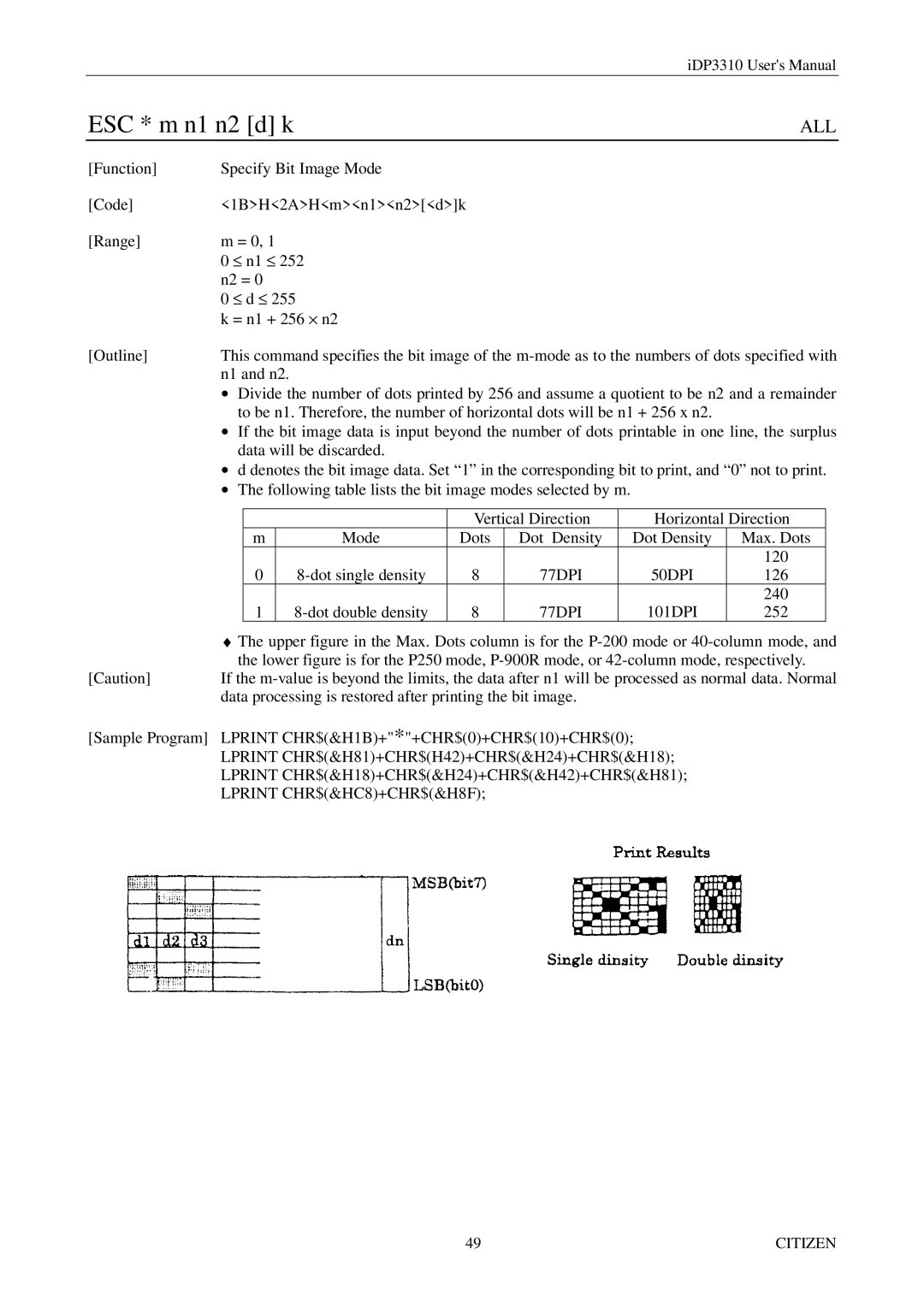
|
|
|
|
|
|
|
|
| iDP3310 User's Manual | ||
ESC * m n1 n2 [d] k |
|
|
|
|
| ALL | |||||
[Function] | Specify Bit Image Mode |
|
|
|
|
|
| ||||
[Code] | <1B>H<2A>H<m><n1><n2>[<d>]k |
|
|
|
|
| |||||
[Range] | m = 0, 1 |
|
|
|
|
|
|
| |||
| 0 | ≤ n1 ≤ 252 |
|
|
|
|
|
| |||
| n2 = 0 |
|
|
|
|
|
|
| |||
| 0 | ≤ d ≤ 255 |
|
|
|
|
|
| |||
| k = n1 + 256 × n2 |
|
|
|
|
|
| ||||
[Outline] | This command specifies the bit image of the | ||||||||||
| n1 and n2. |
|
|
|
|
|
|
| |||
| ∙ | Divide the number of dots printed by 256 and assume a quotient to be n2 and a remainder | |||||||||
| ∙ | to be n1. Therefore, the number of horizontal dots will be n1 + 256 x n2. |
|
| |||||||
| If the bit image data is input beyond the number of dots printable in one line, the surplus | ||||||||||
|
| data will be discarded. |
|
|
|
|
|
| |||
| ∙ d denotes the bit image data. Set “1” in the corresponding bit to print, and “0” not to print. | ||||||||||
| ∙ | The following table lists the bit image modes selected by m. |
|
|
| ||||||
|
|
|
|
|
|
|
|
|
|
|
|
|
|
|
|
|
| Vertical Direction |
| Horizontal Direction |
| ||
|
|
| m |
| Mode | Dots | Dot Density |
| Dot Density | Max. Dots |
|
|
|
|
|
|
|
|
|
|
| 120 |
|
|
|
| 0 |
| 8 | 77DPI |
| 50DPI | 126 |
| |
|
|
|
|
|
|
|
|
|
| 240 |
|
|
|
| 1 |
| 8 | 77DPI |
| 101DPI | 252 |
| |
♦The upper figure in the Max. Dots column is for the
the lower figure is for the P250 mode,
[Caution]If the
[Sample Program] LPRINT CHR$(&H1B)+"*"+CHR$(0)+CHR$(10)+CHR$(0); LPRINT CHR$(&H81)+CHR$(H42)+CHR$(&H24)+CHR$(&H18); LPRINT CHR$(&H18)+CHR$(&H24)+CHR$(&H42)+CHR$(&H81); LPRINT CHR$(&HC8)+CHR$(&H8F);
49 | CITIZEN |
